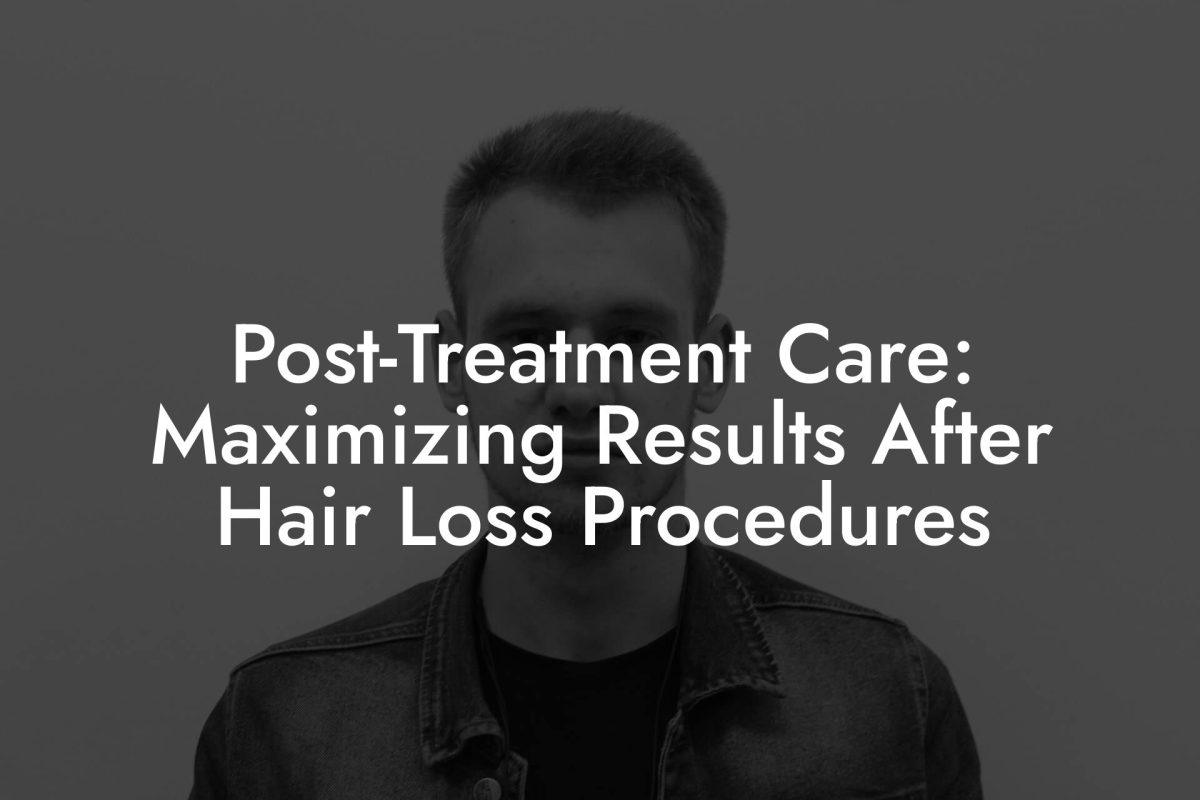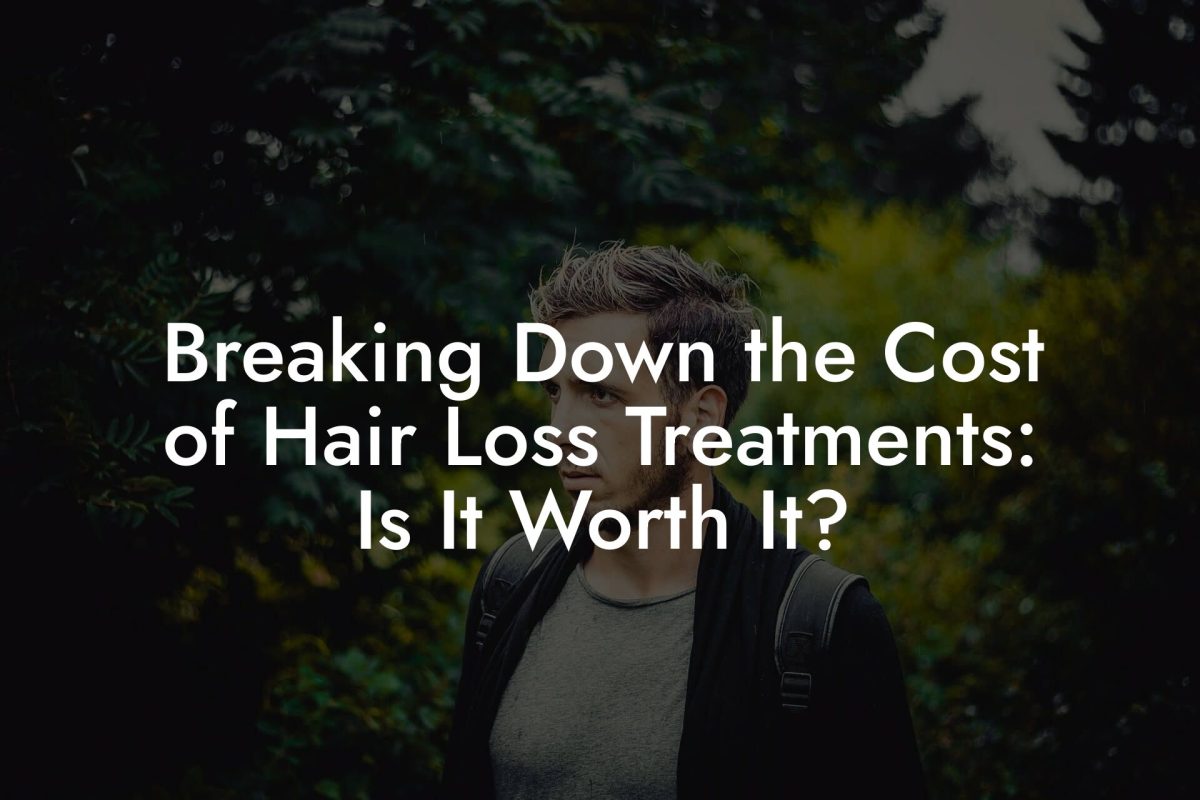Hair Loss Library
Microneedling for Hair Loss: Benefits, Risks, and Results

Ever felt like your hairline is staging a disappearing act faster than your favorite meme goes viral? Welcome to the world of microneedling for hair loss—a game-changing, needle-ninja technique that’s taking the crown in modern hair restoration. Whether you’re a skeptical millennial or a Gen Z dude tired of bad hair days on repeat, this guide breaks down the benefits, risks, and real results of microneedling while keeping it as chill and relatable as your favorite Spotify playlist.
Microneedling for Hair Loss: What’s the Buzz All About?
Picture this: tiny, precision-engineered needles creating micro-injuries on your scalp, sending out a “danger” signal that kick-starts your body’s natural healing process. The result? Boosted collagen production, improved blood flow, and, yes, stimulated hair growth. Microneedling, sometimes referred to as “collagen induction therapy,” isn’t just for skincare anymore—it’s now a frontline contender in the battle against hair loss.
While it might sound a bit intimidating at first (needles, needles everywhere!), the procedure is surprisingly gentle and quick. When done correctly, this treatment can help rejuvenate your scalp, reviving dormant hair follicles and ushering in thicker, fuller hair. If you’re looking for a straightforward, minimally invasive method to give your hair a fighting chance, let’s dive into the nitty-gritty of microneedling and see what it can do for you.
How Does Microneedling Work Its Magic?
Think of your scalp as fertile soil waiting for a little extra nutrient boost. When those tiny needles penetrate the skin, they create controlled micro-injuries. This process is like sending out a flare—your body jumps into action, releasing growth factors and collagen to repair the “wounds.” The end result? Not only does your scalp look rejuvenated, but it also becomes a nurturing environment for new hair growth.
The Science Behind the Needles
At its core, microneedling leverages a simple yet powerful idea: our bodies heal by producing collagen and elastin. These proteins are essential for skin strength and elasticity. When applied to the scalp, the same principle helps repair damaged hair follicles and stimulates the production of growth factors like platelet-derived growth factor (PDGF) and fibroblast growth factor (FGF). These magical molecules encourage blood flow and improve nutrient delivery to the hair follicles, creating a prime environment for hair regeneration.
In other words, microneedling is like hitting the refresh button on your scalp. It wakes up those sleepy follicles, nudging them to produce thicker, healthier strands. And hey, who wouldn’t want a little extra pep in their hair’s step?
The Top Benefits of Microneedling for Hair Loss
Let’s be real—when it comes to hair restoration, every benefit counts. Here are some of the most compelling reasons why microneedling is earning its place in your grooming arsenal:
- Stimulated Hair Growth: By triggering collagen production and releasing growth factors, microneedling can jump-start the hair follicle’s natural growth cycle, encouraging thicker and fuller hair.
- Improved Scalp Health: The process enhances blood circulation on the scalp, ensuring that your follicles are well-fed with essential oxygen and nutrients.
- Enhanced Product Absorption: Post-microneedling, your scalp becomes more receptive to hair growth serums and topical treatments, making them even more effective.
- Minimally Invasive: Unlike surgical hair transplants, microneedling is a non-surgical procedure with minimal downtime—a perfect fit for busy millennials and time-conscious Gen Zers.
- Cost-Effective: Compared to expensive hair restoration surgeries, microneedling offers a budget-friendly alternative without sacrificing quality results.
In short, microneedling doesn’t just aim to stop hair loss—it works on kickstarting new growth and paving the way for long-term hair health. And who doesn’t appreciate a little bonus when it comes to looking good?
The Potential Risks and What to Watch Out For
Now, before you get all hyped up and start booking your appointment, it’s important to address the other side of the coin. Like every cosmetic procedure, microneedling comes with its own set of risks and considerations. But don’t worry—a little knowledge here makes you all the more prepared.
Common Side Effects
Most of the time, microneedling is pretty chill. However, some of you might experience:
- Redness and Irritation: Expect a bit of scalp redness post-procedure, which usually fades within a few hours to a couple of days.
- Soreness: Mild discomfort and tenderness are common, much like after a moderate workout session.
- Dryness and Flakiness: Your scalp might shed some dead skin cells as it heals, but that’s just a sign that the healing process is in full swing.
When to Be Cautious
While serious complications are rare, keep these red flags in mind:
- Infections: Ensure you choose a reputable clinic or professional. Poor hygiene practices can lead to scalp infections—even your trusty immune system needs to be handled with care.
- Overuse: Too much microneedling can overwhelm your scalp, possibly leading to further damage. Following a professional’s guidance on frequency is key.
- Scarring: With improper technique or overaggressive treatment, there’s a risk of scarring. Always opt for experienced practitioners who have mastered the art of precision.
It’s all about balance. Microneedling can offer stellar benefits, but staying informed and cautious ensures you get the best outcome without unwanted side effects.
Microneedling vs. Other Hair Loss Treatments: How Does It Stack Up?
In the bustling universe of hair loss solutions, microneedling is just one of the stars. Let’s take a quick tour of how it compares with other popular treatments:
Finasteride and Minoxidil
These pharmaceutical options have long been the go-to for many guys. Finasteride and minoxidil work hormonally and topically, respectively, to slow hair loss and promote growth. They’re proven and effective, but they come with their own set of side effects and the need for daily application. Microneedling, on the other hand, is a periodic treatment that can be combined with these products to supercharge results.
Hair Transplants
Surgical hair transplants offer a more permanent solution by relocating hair follicles from one part of the scalp to another. Though highly effective, they’re invasive, costly, and come with downtime and recovery considerations. Microneedling offers a less dramatic, non-surgical alternative that can be used either as a standalone treatment or as a complementary therapy to further enhance transplanted hair growth.
Low-Level Laser Therapy (LLLT)
LLLT is another non-invasive treatment that uses laser light to stimulate hair follicles. While some users have reported positive outcomes, the scientific consensus is still out on its long-term efficacy. Microneedling offers a more direct approach by physically stimulating the scalp and is often combined with LLLT to maximize results.
Ultimately, if you’re looking for a method that’s less invasive than surgery, more dynamic than daily regimens, and compatible with other treatments, microneedling might be your best bet.
What to Expect During a Microneedling Session
If you’re wondering what actually happens when you book a microneedling session, here’s a rundown to set your mind at ease:
Step 1: The Consultation
Before any needles come into play, you’ll have a consultation with a professional. They’ll assess your scalp, discuss your hair loss history, your expectations, and whether you’re an ideal candidate for microneedling.
Step 2: Numbing and Preparation
To minimize any discomfort, a topical numbing cream is applied to your scalp. Once the area is prepped and sanitized (yes, hygiene is a big deal here), the microneedling session can kick off.
Step 3: The Microneedling Process
Using a device equipped with fine needles, the practitioner glides over your scalp. You might feel a series of tiny pricks—think of it as a mildly annoying facial massage. The treatment lasts anywhere from 20 minutes to an hour depending on the size of the area being treated.
Step 4: Post-Treatment Care
After the session, your scalp will be a bit red and sensitive—kind of like you just spent an hour in the sun without sunscreen. But don’t fret; the redness fades, and you’ll likely be given aftercare instructions such as avoiding harsh hair products, wearing SPF, and perhaps even a recommendation to take it easy for the day.
The typical protocol involves a series of treatments spaced several weeks apart. Consistency is the secret sauce—stick with it, and the results will start showing their true colors (or hair—whatever floats your boat).
Real Results: What’s the Typical Timeline?
Let’s cut to the chase: you want to know when you’ll start seeing the magic happen. While every scalp is a world of its own, here’s a rough timeline to help set your expectations:
- Immediate Post-Treatment: Expect some redness and mild swelling. This is perfectly normal—they’re signs that your scalp is waking up.
- 4-6 Weeks: At this point, initial hair regrowth might be noticeable. It might not be the luscious mane you dreamed of yet, but it’s the first sign of progress.
- 3-4 Months: With consistent sessions, many users witness more substantial improvements. Hair appears thicker, and overall density increases.
- 6-12 Months: Long-term results are assessed—if you’re sticking to your treatment plan and possibly combining it with other hair loss therapies, you could see a dramatic improvement in hair volume and scalp health.
Keep in mind that individual results vary. Genetics, overall health, and adherence to a post-treatment regimen all play roles in the final outcome.
Case Studies: Real Life Transformations That Inspire
Nothing beats a few real-world success stories to illustrate what microneedling can do. Let’s check out three fictional yet relatable journeys that might just mirror your own aspirations for a fuller mane.
The Comeback Kid
Meet Aaron, a 32-year-old tech enthusiast who’d had a long-standing battle with thinning hair. Tired of hiding under hats during Zoom calls, he started a microneedling regimen combined with a targeted hair serum. After three months of disciplined sessions, Aaron noticed his hair regaining volume at the crown—enough to boost his confidence and earn him compliments at work. His journey, peppered with humorous selfies showing “before and after” progress, reminds us that sometimes a little prick is all it takes for a major comeback.
The Bold Innovator
Then there’s Marcus, a 28-year-old digital marketer known for his bold style and sharp wit. With early signs of genetic hair loss, he opted for a microneedling treatment to pair up with his favorite non-daily hair tonic. Marcus documented his process on social media with tongue-in-cheek posts and progress videos—think “Microneedling: Unboxing My Scalp Edition.” Within half a year, his hair started filling in, giving him a natural, fuller look that echoed his innovative spirit.
The Lifestyle Balancer
Finally, consider Ethan, a 35-year-old fitness buff who treasured both a healthy body and a healthy head of hair. Frustrated by hair loss that threatened his gym selfies, Ethan integrated microneedling into his post-workout recovery routine, not to mention an improved diet rich in protein and vitamins. Over time, his coordinated approach paid off—he experienced noticeable hair regrowth and a boost in scalp health, proving that when you treat your hair like any other part of your workout regimen, results follow.
Advanced Techniques: Combining Microneedling with Other Treatments
For those who believe in the power of a combined approach (and who doesn’t love double-dipping when it comes to self-care?), microneedling can be paired with various other treatments to amp up its effects. Here are a few strategies to consider:
Microneedling with Topical Solutions
Post-microneedling is the perfect time to apply hair growth serums, peptides, and other nutrient-rich formulas. The micro-channels created by the needles allow these products to penetrate deeper into the scalp, enhancing their efficacy. It’s like giving your hair a VIP backstage pass to all the nourishing ingredients.
Complementing with PRP (Platelet-Rich Plasma)
Platelet-Rich Plasma (PRP) therapy involves using your own blood’s growth factors to promote hair growth. Combined with microneedling, PRP can double the training sessions for your follicles—an invigorating boost that your scalp will thank you for.
Healthy Lifestyle Integration
There’s no magic pill—nurturing your hair also means having a healthy diet, managing stress, getting enough sleep, and even regular exercise. Think of microneedling as one part of an all-star team that includes balanced nutrition, hydration, and a positive mindset.
Combining these treatments can not only accelerate the hair growth process but also sustain long-term benefits. The key is consistency and working with professionals to tailor a regimen that fits your unique needs.
Resources and Community Support: Your Next Steps
Ready to dive in and reclaim your hair’s glory? You’re not alone. The journey towards enhanced hair growth with microneedling is supported not just by cutting-edge science but also by an ever-growing community of men who have walked—or should we say, pricked—the path before you.
Here are some practical next steps to get started:
- Consult a Professional: Book an appointment with a reputable hair restoration specialist or dermatologist who can evaluate your hair loss and guide you on whether microneedling is right for you.
- Do Your Homework: Research clinics and read user reviews. Knowledge is power—and a well-informed choice ensures that you’ll receive safe and effective care.
- Join a Community: Look for online forums, social media groups, or local meetups where guys share their microneedling stories, tips, and common challenges. Sometimes, the best advice comes from those who’ve experienced similar hair loss battles.
- Set Realistic Goals: Understand that hair growth is a marathon, not a sprint. Track your progress and celebrate small victories—a few new hairs here and there can be the start of a bigger change.
- Educate Yourself Continually: Stay updated on the latest research and techniques in hair restoration. New advancements come along faster than trending TikTok challenges.
Empower yourself with knowledge, lean on community support, and remember that every small step is a leap towards reclaiming your confidence. The microneedling journey is as much about self-care and self-empowerment as it is about growing hair.
Designing a Personalized Microneedling Plan for Maximum Impact
Not all hair loss journeys are created equal—your plan should be as unique as your fingerprint (or that epic selfie you took last summer). Crafting a personalized microneedling plan starts with understanding your own hair loss pattern, goals, and lifestyle.
Step 1: The Initial Assessment
Have a thorough consultation with a trusted professional. They will assess your scalp’s condition, discuss your hair loss timeline, and help determine if microneedling is the ideal candidate for your needs.
Step 2: Setting Your Goals
Whether you want to re-energize thinning areas, improve scalp health overall, or simply add volume to your look, setting clear objectives will guide the treatment process and help keep you motivated through the journey.
Step 3: Integrating Complementary Therapies
Consider supplementing your microneedling regimen with other treatments like PRP therapy or nutrient-rich topical solutions. Even small tweaks in your at-home hair care routine can amplify your results.
Step 4: Crafting a Routine
Consistency is key. Develop a schedule that aligns with your lifestyle—whether that means weekend treatments or incorporating sessions into your weekly grooming ritual. Remember, every session builds upon the last, so sticking to your routine will make all the difference.
Step 5: Monitor and Adjust
Track your progress with photos, journaling changes in hair thickness and overall scalp health. Regular follow-ups with your specialist can help adjust the treatment plan as needed, ensuring you’re always on track.
Tailor your microneedling regimen to fit not just your hair loss concerns but your overall lifestyle. With the right plan, you’ll soon see that each treatment step is like leveling up in your personal grooming game.
Microneedling FAQs: Your Top Questions Answered
We know you’ve got questions—and we’ve got answers. Here are some of the most frequently asked questions about microneedling for hair loss:
1. What exactly is microneedling and how does it promote hair growth?
Microneedling uses tiny needles to create micro-injuries on your scalp, which in turn stimulate your body to produce collagen and growth factors that revitalize hair follicles and encourage new growth.
2. Is microneedling painful?
Most users report only mild discomfort similar to light pinpricks. Topical numbing agents are typically applied beforehand to ensure the process is as comfortable as possible.
3. How many sessions will I need to see results?
Results vary from person to person, but many users start noticing improvements within 4-6 weeks after a few sessions, with more significant changes in 3-4 months.
4. Can I combine microneedling with other hair loss treatments?
Absolutely! In fact, many practitioners recommend combining microneedling with topical treatments or PRP therapy to maximize results.
5. Are there any side effects?
Common side effects include mild redness, irritation, and temporary dryness, all of which usually resolve within a few days.
6. How do I choose the right clinic or practitioner?
Research, reviews, and consultations are key. Look for experienced professionals who specialize in hair restoration and maintain rigorous hygiene standards.
7. What should I do before and after a session?
Follow your practitioner’s pre- and post-care instructions closely—this might include avoiding harsh hair products, using gentle cleansers, and protecting your scalp from excessive sun exposure post-procedure.
8. Is the treatment suitable for all types of hair loss?
Microneedling works best for androgenetic alopecia and early stages of hair thinning, but it’s always best to consult a professional to determine if it’s right for your specific condition.
9. How long does each session last?
A typical microneedling session for hair loss usually lasts between 20 to 60 minutes depending on the extent of the area being treated.
10. When will I see full results?
While initial improvements may be visible in a few weeks, long-term, full results are generally observed after 6 to 12 months of consistent treatments.
Your Journey to a Fuller, Confident Mane Begins Now
Embracing microneedling for hair loss is about taking a step towards reclaiming not only your hair but also your self-confidence. With a procedure that blends cutting-edge science with natural healing processes, you’re setting the stage for a rejuvenated scalp and a vibrant, fuller head of hair.
Whether you’re just dipping your toes into the world of hair restoration or you’re on a mission to supercharge your current regimen, microneedling offers a balanced blend of innovation and simplicity. Every tiny puncture is a step toward stimulating your scalp’s natural repair and growth processes—an approach that aligns perfectly with a modern, results-driven lifestyle.
So don’t let thinning hair dampen your vibe. With the right plan, expert guidance, and a healthy dose of optimism, you can harness the power of microneedling to transform your appearance and, more importantly, boost your self-esteem. Embrace the process, stay consistent, and watch as your scalp evolves into a fertile ground for new beginnings.
Your journey toward a fuller, more dynamic mane is uniquely yours. Celebrate each milestone—every new hair strand is a testament to persistence, innovation, and the willingness to try something new. Keep that confidence high and your grooming ritual on point, because this is one adventure where every prick counts!
If you loved this article... Dive deeper into the world of mens hair loss with our most popular sections. If there is anything you think is missing or anything you would love for us to write about, just give us a shout.
Prescription Solutions: The Best Medications for Men’s Hair Loss
Minoxidil & Beyond: Exploring Topical Treatments for Hair Regrowth
How Finasteride Works: The Science Behind This Hair Loss Blocker
Platelet-Rich Plasma (PRP) Therapy: Is It the Answer to Hair Loss?
Hair Transplant 101: A Beginner’s Guide for Men
Exploring Laser Therapy: Non-Invasive Options for Hair Regrowth
The Pros and Cons of Oral Hair Loss Medications
New Frontiers in Hair Loss Treatment: Stem Cell Therapy Explained
Surgical vs. Non-Surgical: Which Hair Loss Treatment Is Right for You?
Understanding Combination Therapy for More Effective Hair Regrowth
How to Choose the Right Hair Loss Clinic: Expert Tips
Exploring Off-Label Treatments: What’s Worth Trying for Hair Loss?
Managing Side Effects: What to Expect from Hair Loss Medications
The Latest in Hair Loss Research: Emerging Medical Treatments
Microneedling for Hair Loss: Benefits, Risks, and Results
How PRP Therapy Boosts Hair Growth: A Closer Look
The Role of DHT in Hair Loss and How Medications Counteract It
Customized Treatment Plans: Tailoring Hair Loss Solutions for You
Understanding Clinical Trials: How New Hair Loss Treatments Are Tested
Breaking Down the Cost of Hair Loss Treatments: Is It Worth It?
How to Prepare for a Hair Transplant: A Step-by-Step Guide
Post-Treatment Care: Maximizing Results After Hair Loss Procedures
A Doctor’s Perspective: When to Consider Medical Hair Loss Treatments
Success Stories: Real Men Share Their Hair Restoration Journeys
The Future of Medical Hair Loss Solutions: Trends to Watch
















